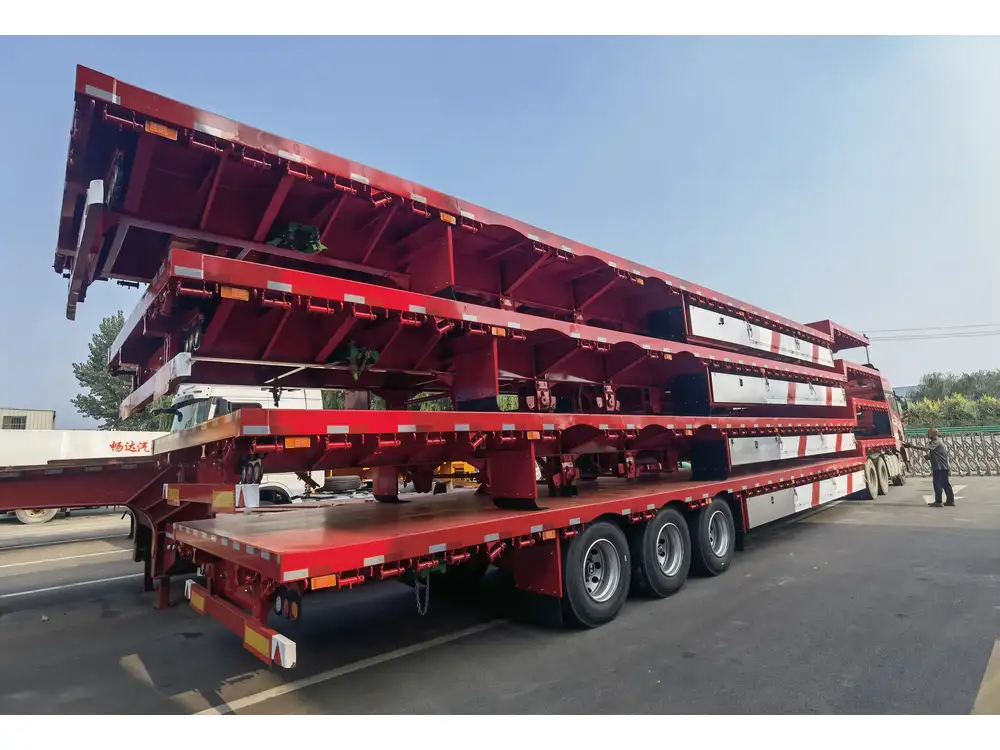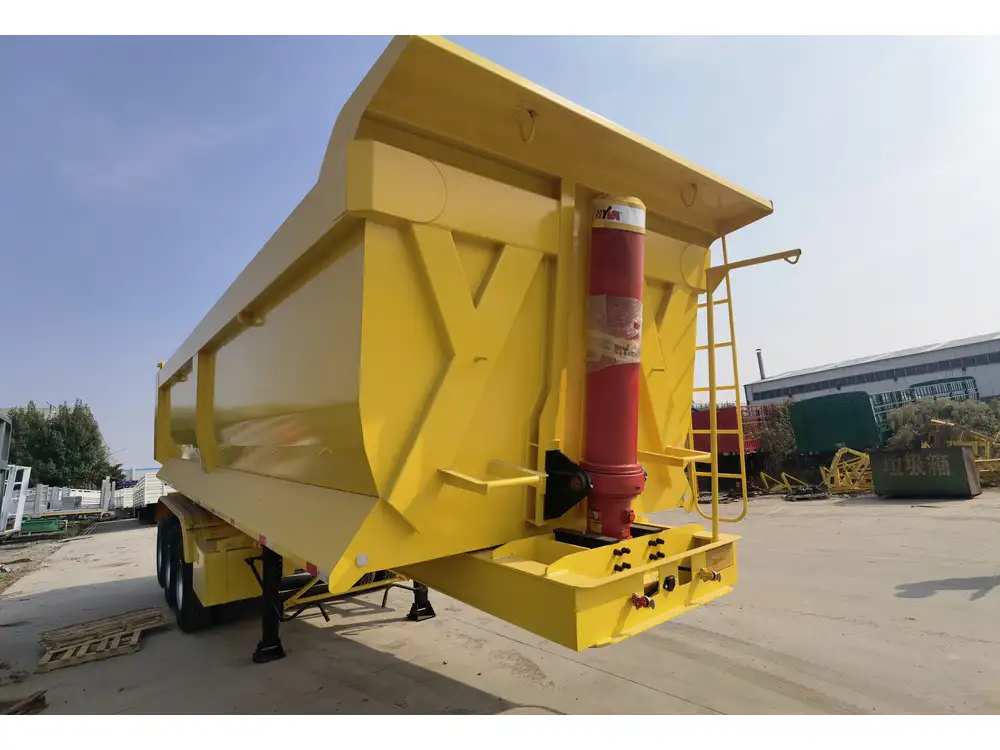Stacking square bales on a flatbed trailer is a vital skill for farmers, transporters, and those participating in rural logistics. The way in which bales are loaded can significantly affect transportation efficiency, safety, and ease of unloading. In this article, we will delve into the nuanced strategies and techniques to effectively stack square bales on a flatbed trailer. By following these structured guidelines, we aim to enhance your loading acumen and ensure optimal experiences when handling bales.
Understanding Square Bales: Dimensions and Weights
Before embarking on loading techniques, it is essential to familiarize yourself with the characteristics of square bales. Standard square bales typically measure 14″ x 18″ x 36″, though variations exist that can influence how they stack.
| Bale Type | Dimensions (inches) | Weight (lbs) |
|---|---|---|
| Small Square | 14 x 18 x 36 | 40-60 |
| Medium Square | 18 x 24 x 48 | 60-80 |
| Large Square | 38 x 48 x 96 | 800-1200 |
Key Considerations When Stacking
Weight Distribution: Understanding the weight of your bales is crucial. Larger bales can lead to a top-heavy configuration if not carefully managed.
Bale Condition: Ensure bales are dry and free from mold or damage. Wet bales can weigh significantly more, affecting weight calculations.
Trailer Capacity: Assess the load capacity of your flatbed trailer; overloading can lead to structural damage or hazardous driving conditions.

Preparing the Flatbed Trailer
Clean and Inspect the Trailer
Before loading, it is vital to prepare the flatbed trailer adequately. A clean, clear surface allows for proper stacking.
- Inspect the Bed: Check for damage, debris, or protruding nails that could compromise the bales.
- Verify Tie-Down Points: Ensure that all tie-down points are functional, as these are critical for securing the load later.
Use of Safety Equipment
Equipping yourself with necessary safety gear can mitigate risks associated with loading and transportation.
- Gloves: Protect your hands from rough surfaces and potential hazards.
- Steel-toed Boots: Ensure foot protection when maneuvering around the trailer and bales.
- Reflective Apparel: Enhance visibility, especially in low-light conditions.

The Art of Stacking: Techniques and Tips
Stacking square bales correctly not only optimizes space but also ensures safety while on the road. Here are foundational methods and approaches.
The Flat Stack Method
This technique involves stacking layers of bales on the flatbed trailer directly. It is particularly advantageous for smaller bales.
- First Layer: Begin at the front of the trailer, placing bales side by side.
- Cross-Stacking: For the second layer, stack bales perpendicular to the first. This interlocking design enhances stability.
- Continuing Layers: Repeat the cross-stacking pattern, alternating as you build upward to create a sturdy pyramid-like structure.
Advantages of Flat Stacking
- Stability: The cross-stacking creates a solid base, reducing the risk of shifting during transport.
- Accessibility: This method allows for easier unloading from the rear or sides.

The Planed Stacking Method
For larger bales or longer hauls, a planned stack offers additional stability.
- Side Containers: Utilize containers or side barriers on the trailer to help keep bales in place.
- Stacking Direction: Align bales in the same direction, with the edges flush against the side barriers, creating an efficient and structured load.
- Secure with Straps: Use durable ratchet straps to bind each layer securely.
Benefits of Planed Stacking
- Minimized Movement: The supportive container structure reduces lateral movement, essential for winding roads.
- Maximized Space: This method enables fuller utilization of trailer space, allowing for more bales in a given area.
Securing the Load: Safety First
Regardless of the stacking method utilized, securing the load is non-negotiable when transporting square bales.

Tie-Down Techniques
Ratchet Straps: These provide a firm hold and are adjustable. Use at least two straps per layer of bales.
Edge Protectors: Attach edge protectors to prevent strap damage during tightening processes.
Recommended Tie-Down Patterns
- Cross-Pattern: For increased stability, employ a crisscross pattern with your straps over the stacked bales.
- Vertical Straps: Include vertical straps that further reinforce the load against shifting.
Checkpoints During Transit
Regular Inspections: Stop periodically to check the load for any movement or slippage during transportation. Tightening straps may be necessary.
Speed Considerations: Maintain a moderate speed, particularly when cornering or driving on uneven terrain, to minimize the risk of accidents.

Unloading Tips: Efficient and Safe Practices
After reaching your destination, proper unloading practices are essential for safety and efficiency.
Plan Your Approach
Identifying Interests: Before unloading, inspect the area for space and obstructions. A clear path allows for smooth unloading.
Use of Equipment: Depending on the quantity and size of bales, you may need a fork or lift to assist in unloading.
Controlled Unloading Techniques
Single Drops: Begin by unloading one bale at a time, especially from higher stacks, to prevent a cascade of bales.
Staggered Removal: When unloading multiple bales, stagger removal from alternate sides of the stack to maintain balance.

Follow-Up Procedures
Inspect Bales Post-Unloading: Check bales for integrity and any potential damage incurred during transport.
Trailer Inspection: Ensure the trailer remains in good condition post-use, particularly after heavy loads.
Conclusion
Stacking square bales on a flatbed trailer may seem straightforward, but mastering the intricacies involved can greatly enhance efficiency, safety, and overall performance in agricultural logistics. By employing strategic stacking methods and securing the load adequately, individuals can mitigate risks associated with transportation. Remember, the key lies in preparation, execution, and continued vigilance throughout the journey.
By adhering to these guidelines, we aim to equip you with the necessary knowledge to achieve superior stacking practices and ensure an optimal experience moving square bales. Whether you’re a seasoned expert or new to the practice, these insights offer valuable tools for successful bales management.



